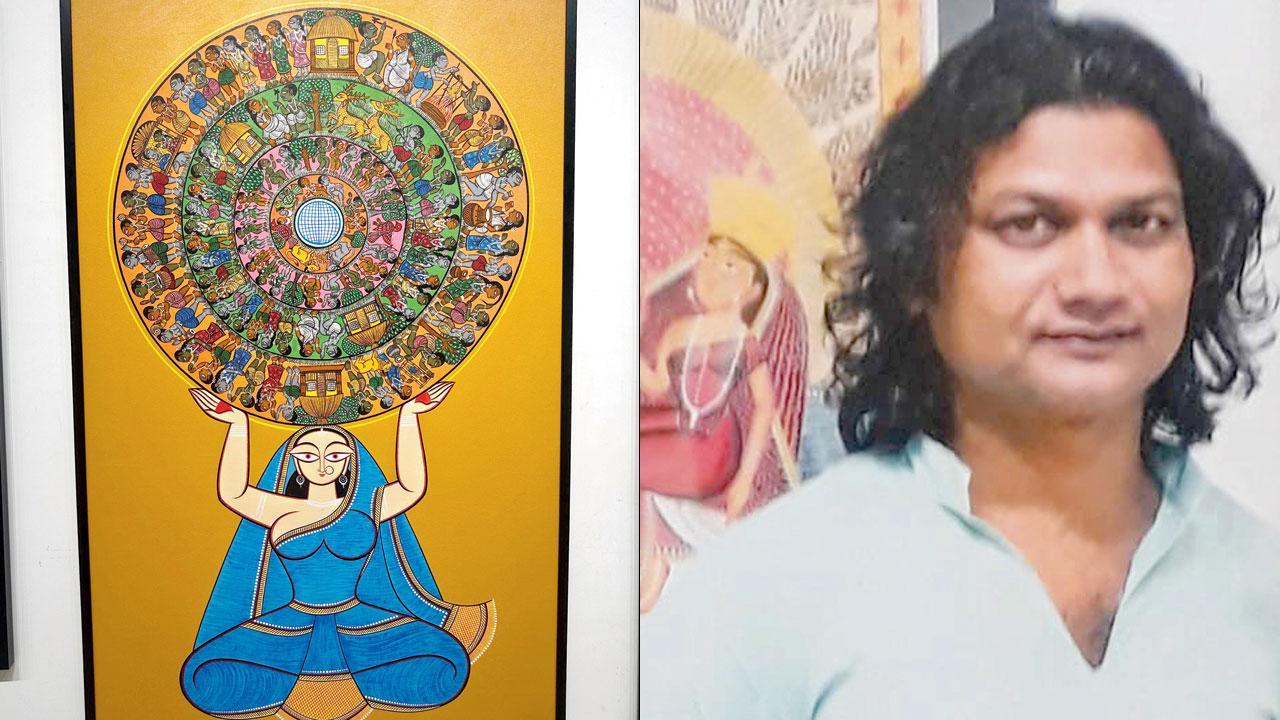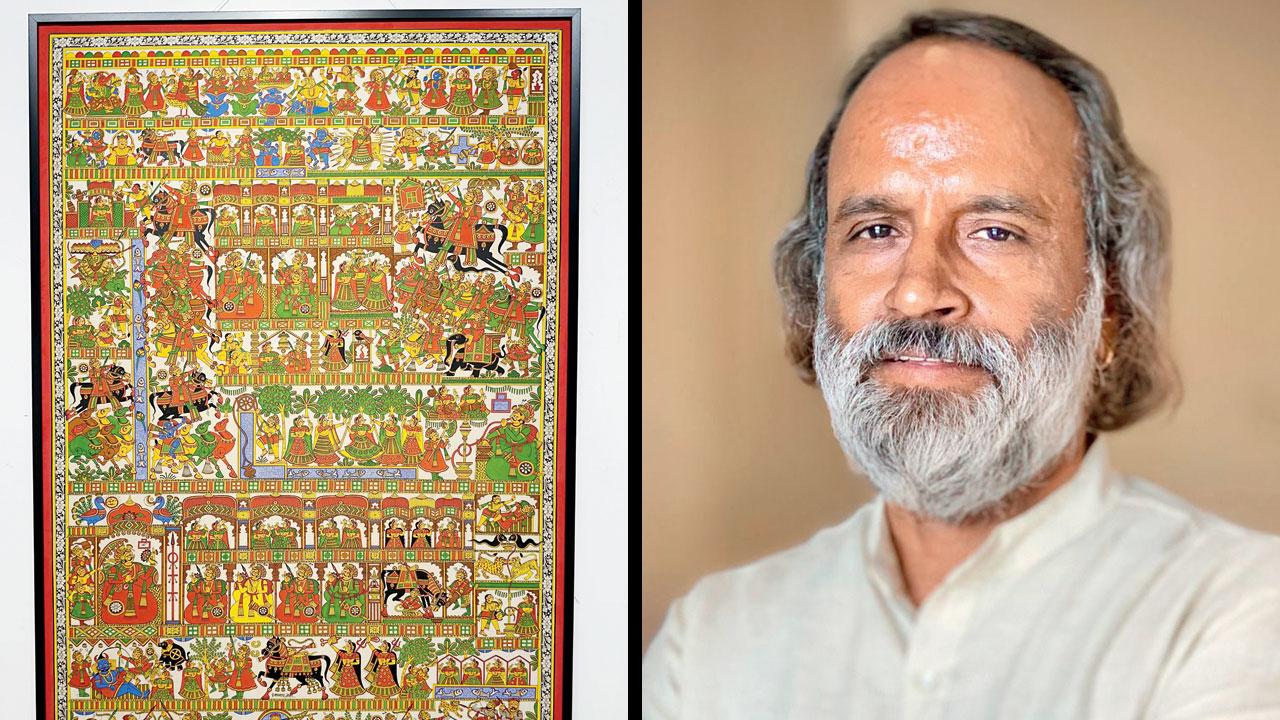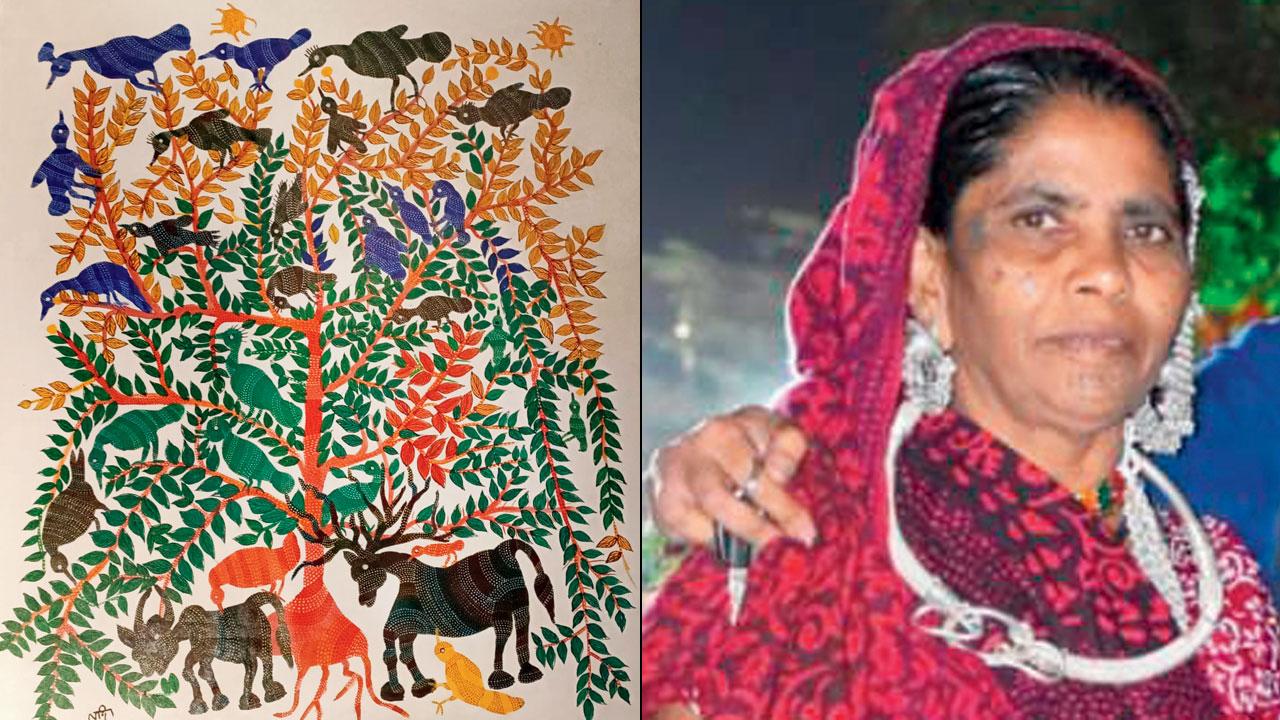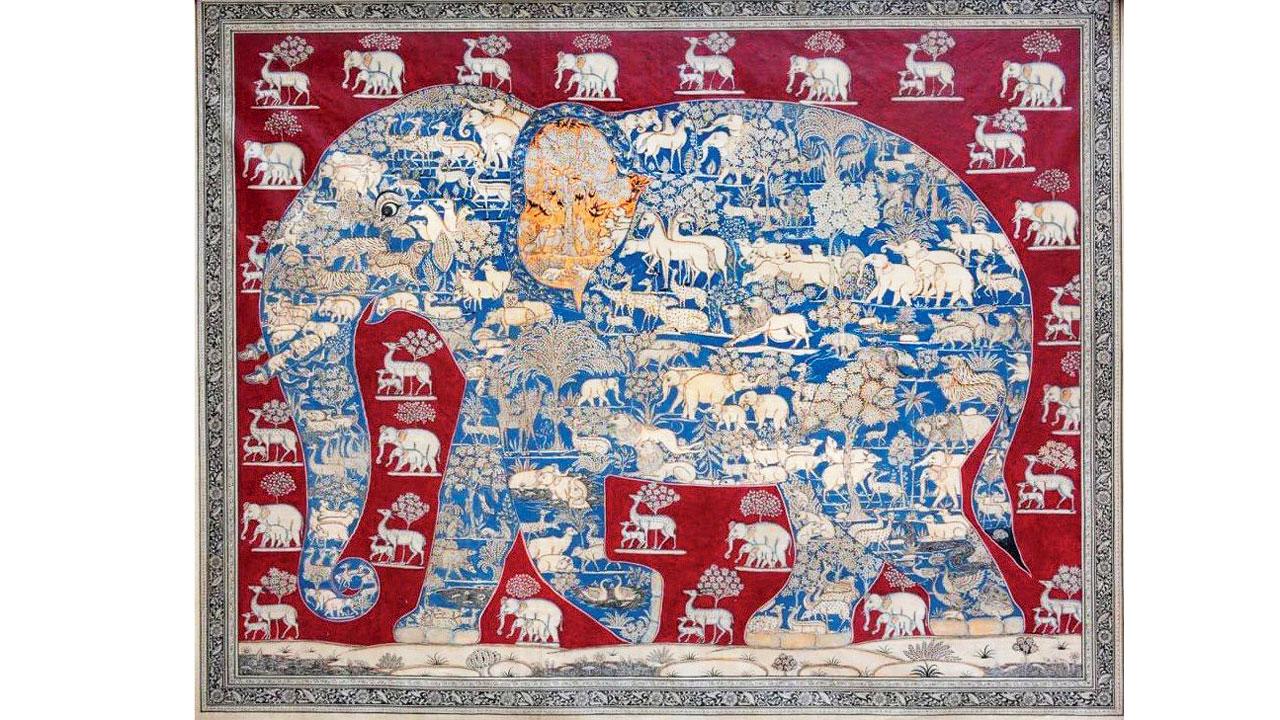Tradition, narratives and creativity come together to highlight the changing face of folk art in a five-day exhibition by 10 award-winning folk artists at Jehangir Art Gallery

A Kalighat-styled work titled Basu Mata by (right) Anwar Chitrakar
Everything is connected to nature, explains Kalyan Joshi. It is at the heart of all folk art, he explains. Joshi should know. The 55-year-old artist is in town as his works will be on display at Jehangir Art Gallery as part of the ongoing exhibition, Beyond Tradition: Change and Continuity in Indian Art.
Featuring 10 National Award-winning artists including Joshi, Anwar Chitrakar, Ladobai, Shakir Ali and Gitanjali Das, among others, the exhibition highlights the diversity and complexity in Indian folk art. It is also the only exhibition by the collective in Mumbai this year. Each of the art forms are particular to the region and carry within them geographical and cultural elements.
ADVERTISEMENT

A Phad folktale of Pabuji created using natural pigment on cloth by (right) Kalyan Joshi
Joshi points out that most folk art are narrative forms. “Phad, for instance, was like the cinema of its time. The canvas would tell a story that two performers would then recreate for the audience sitting in front of them. It was an accompaniment to the performance,” he shares. While they traditionally told folk tales of legends such as Pabuji, Joshi has slowly found his own voice through adding elements of mythology, abstract forms and societal context to his works. “I have created canvases on issues such as water scarcity and pollution as well. What I say might change, but the medium is meant for stories,” he shares.

A Bhil-style canvas titled Tree of Life animals by (right) Ladobai depicts natural harmony
This is a common echo that finds voice in another award-winning Bhil artist, Ladobai. Born in Jhabua, Madhya Pradesh, her artistic bent found new expression when she arrived in Bhopal with her husband looking for employment. It was at Bharat Bhavan that she was discovered by the artist Jagdish Swaminathan. Since then, she has exhibited at the Musée du Quai Branly in Paris and Grosvenor Gallery in London, among other spaces.
“My works are in the tradition of Bhil art made through natural and earth pigments. They are stories of life as we observe it,” she notes humbly through her son, Ajay. For this exhibition, she worked on canvas with new pigments such as charcoal and cow dung/mud, to keep with the focus on nature. They might be carrying on a tradition, but innovation is a necessary part of the game. Anwar Chitrakar began learning the art of Kalighat painting from his father in Midnapore. “Art is meant to evolve.

Elephant Jungle by Gitanjali Das, tussar on silk
Even the Kalighat artists were initially sculptors and clay artists from the 24 Parganas district in West Bengal, who started painting when they moved to Kalighat,” he explains. A prominent name in Indian Mughal miniatures, S Shakir Ali adds, “Folk artists can sometimes be lost in a singular style. For instance, with Mughal miniatures there is only so much innovation you can bring to court scenes stylistically.” In a canvas titled Mythological Horse, the Padma Shri-awardee infuses mythology and nature to the style of Mughal miniatures. “My works are built around the black buck, blue cows and vultures. The use of mythology adds creativity and expression to the style,” he notes.
This is a synthesis of the ongoing change in Indian folk art. Anwar explains, “As we [folk artists] grow and travel beyond the villages, we are discovering new visuals. This enables our works to move beyond the museum space.” It is also a responsibility, states Joshi. “I have used traditional, abstract and modern forms. Some mythologies I use, like the Hanuman Chalisa, are traditional, but my children create works that feature on tote bags and notebooks,” he says.

Mythological Horse by (right) Shakir Ali blends Mughal miniatures with nature
In the end, that is the purpose of folk art. “The Kalighat paintings show life as it was in the era of the British. Our paintings and work must tell the story of our world, in their own unique way of expressing. That is the only way for the tradition to carry on,” concludes Anwar. After all, stories must go on.
From June 12 till June 17
Time 11 am to 7 pm
At Jehangir Art Gallery, MG Road, Kala Ghoda, Fort.
 Subscribe today by clicking the link and stay updated with the latest news!" Click here!
Subscribe today by clicking the link and stay updated with the latest news!" Click here!








